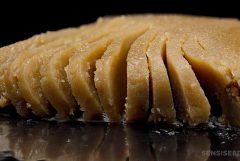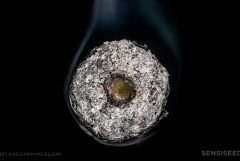Hashish, the original solventless concentrate, dates back to the 900s. It is traditionally made by extracting and compressing the loose resin heads, also called kief. Learn when is the best time to harvest your plants for hash production, how to make dry sift, charas, ice water or bubble hash, finger hash and scissor hash, and how to press kief into hash.
Hashish has been used as a religious and spiritual sacrament, as medicine, and as a popular and harmless means of relaxation. As such, both the consumption and production of hashish are millennia-old traditions in many cultures worldwide.
So, how to make hashish? First, a bit of history.
History of making hash
Traditionally, for centuries, all hashish produced was rubbed by hand. This was tedious, slow, and labour-intensive work that required many people to process the cannabis into the finished product. This method is still being used, and the resulting hash is referred to as hand-rubbed hash or charas.
The invention of modern dry sieving techniques between the 15th and 16th centuries sped up the process and made it possible to produce larger quantities of hashish.

By sifting the dried material, it could be stored and later processed. An advance that led to a dramatic increase in production and consumption throughout Asia. Hashish then spread to Africa, Europe and the rest of the world through trade, conquest and migration.
Adding different sized screens
A single-screen traditionally used to sift hashish had its problems. If the screen used was too large, there was too much plant matter and residue in the final product. If you use a screen that is too small, you lose the large, matured resin glands, and more immature glands end up in the hash.
Replacing a single sieve with several different sized sieves allowed the filtering process to be refined and the hashish to be purer and more potent. Under the influence of western travellers during the “hippie and Hashish Trail” era, most hash-producing countries moved to using different sized screens.
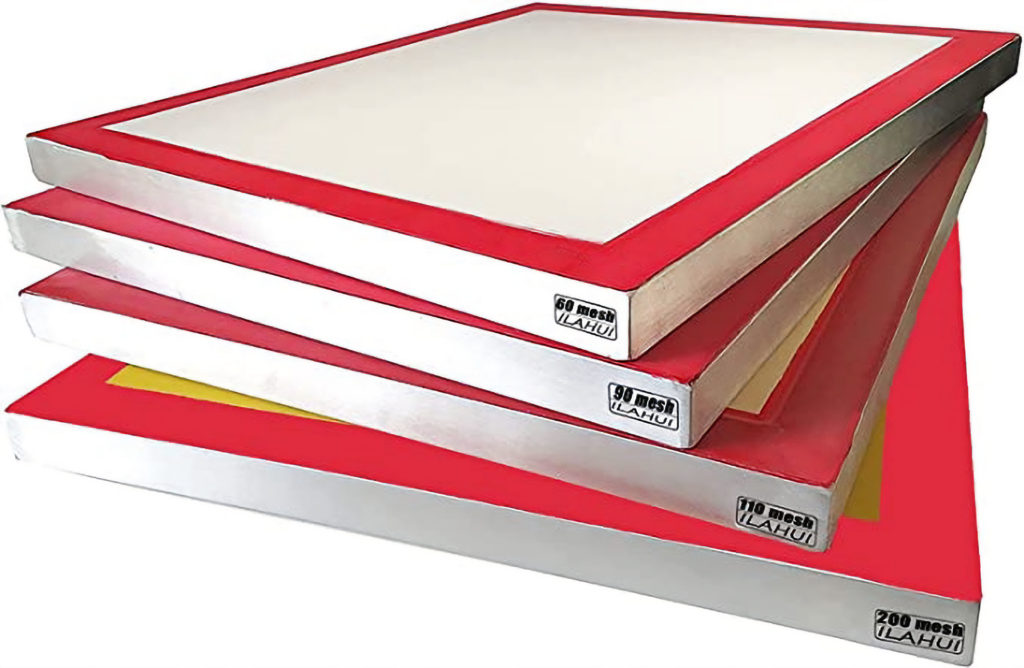
You can now buy screens made especially for hash production and resin extraction, which usually go from 25-200 μm microns in size.
The Pollinator
It was mid-November 1994 at the High Times Cannabis Cup in Amsterdam where Mila Jansen presented the first model of the Pollinator to the crowd.
It was originally built from an old clothes dryer with a heating system ripped out and a screen wrapped around the drum. The Pollinator allowed for the rapid processing of large quantities of cannabis into trichomes or kief. The first Pollinator ever sold went to our very own Ben Dronkers.
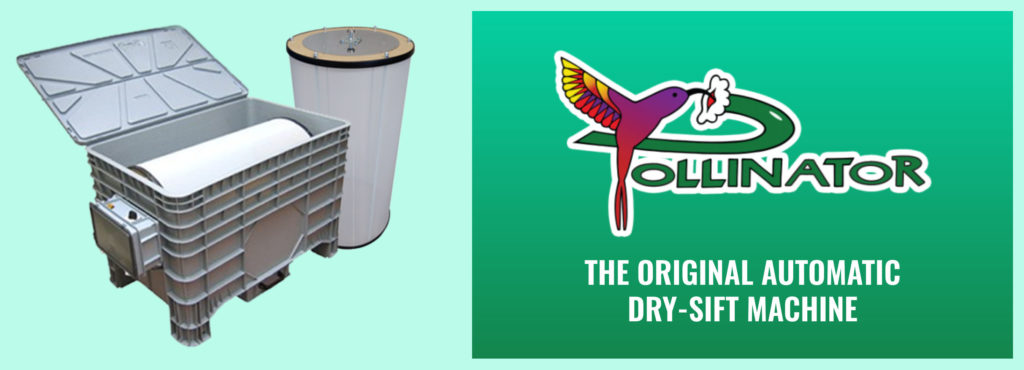
The Pollinator was redesigned with several important upgrades made over the years. It allows people to process their buds and trim and still get a decent quality hash in around 10-15 minutes.
Because of her contribution to hashish culture, Mila was dubbed “The Hash Queen“. She documented her endeavours in a book titled “How I Became The Hash Queen“.
Ice-o-lator bags, bubble bags, and ice-water extraction
A few years after the Pollinator was introduced to the cannabis community, Mila created Ice-o-lator bags. These were nylon bags with an attached sieve at the bottom, and they filtered out the trichomes that sank to the bottom while the rest of the plant material remained in the bag.
The process and the technique were later perfected by Marcus “Bubble man” Richardson and became the basis of ice-water hash production. He placed openings of various sizes to the filter screen and added more bags. Those “upgraded” bags are often referred to as “bubble bags” and hash produced in that way – “bubble hash“.
Bubble bags are simply cloth bags with different-sized meshes at the bottom. The bags work on the same principle as different sized screens but use water to extract the resin gland from the material. After collection, the kief is dried before being compressed.
There are many different brands, makes, and models, but they all work the same way. Bags with mesh on the sides are better because they allow more material to pass through.
Bubbleator

The Bubbleator is essentially a mini washing machine you put your cannabis into. Turning and stirring the material makes the water and ice separation process considerably easier.
The material inside is a washing bag, which stirs cannabis by non-intrusive means. This allows for exceptional trichome extraction without destroying your plant material.
So, how to make hash? 2 methods
There are two traditional methods of making hashish:
- Rubbing the plants with your hands; this is how hand-rubbed hash and charas are made.
- Dry sieving, where cannabis is sifted through one or more fine sieves. This is how dry-sift hash, kief, resin, ice-water, and bubble-hash are made.
When working with trichomes, kief, or hash, it is always a good idea to work in a colder environment. Lower temperatures prevent the resin heads from melting and the most volatile compounds, such as terpenes, from escaping.
Putting your cannabis in the freezer overnight will help extract more kief. The trichomes will become more brittle and come off more easily, whether dry-sieved or extracted with ice water. However, there is no need to put your material back in the freezer between runs.
How to make charas?
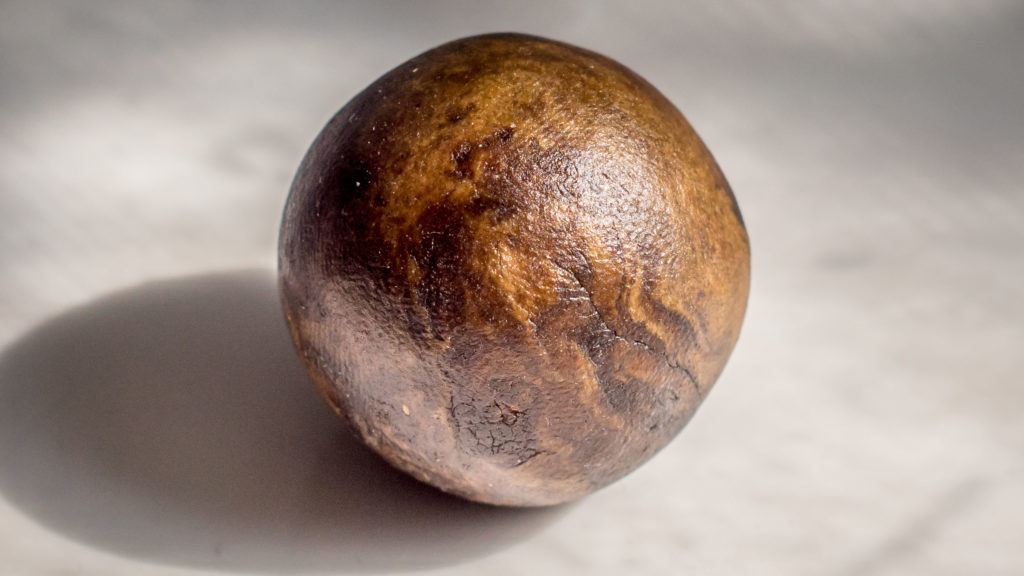
The main difference between charas and all other types of hashish is that it is made from living plants, not dried material. Charas is still traditionally hand-rubbed throughout northern India, Pakistan, and Nepal.
What you’ll need:
- A clean set of hands
- Plants that are about 2-3 weeks until the end of the flowering
- A knife to help scrape the resin
Make charas in 5 steps:
- You start by plucking off the larger leaves and lightly pruning the buds. The more leaf mass you remove, the better.
- Place a bud or a few smaller ones between your palms, press gently, and slowly rub your hands together. Slowly move the bud up and down, rubbing it from top to bottom. You should not apply too much pressure or rub too quickly at first, as this will cause the resin glands to fall off. The slower the process, the better the quality of your charas will be.
- Rubbing the buds combined with your body heat will loosen the resin glands in the buds, and the trichomes will slowly begin to stick to your palms. It would help if you slowly increased the speed and gradually apply more pressure. Do not be too rough, as you do not want to break your bud. It is recommended to keep rubbing as long as resin is extracted.
- Once no more resin comes out of the bud, place it in your palm and squeeze it with your other thumb. This will extract the remaining resin from it. Repeat this process until you have no more buds to rub or you have enough charas.
- When you are done, your hands will be covered in sticky, resinous trichomes, which you now just need to scrape off. When you rub your hands together, most of the pieces will bind together. With a larger piece, you can pick up the smaller chunks that are still stuck to your palms. Once your hands are clean, and you have glued the charas together, it’s ready to use – have fun!
Rubbing charas is slow and strenuous work, and rubbing five to eight grams would be considered an honest day’s work. Charas is so important and widely used that there is even its own standard unit, the tola, which weighs 11.7 grams.
When trimming buds, the resin sticks to your hands and fingers as well as to the scissors. When you scrape it off and collect it, you get a product similar to charas. It’s often called “finger hash” or “scissor hash” and contains resin mixed with many impurities. But after a long day of trimming, it’s a nice reward!
How to make dry-sift hash?

Dry-sieved hashish is traditionally produced in hashish-producing regions such as Afghanistan, Morocco, and Lebanon. Under the Western influence, several different sizes have replaced a single sieve.
Traditionally, dry sieving was done by placing a fine sieve in a bucket or container, placing the dried and crushed material on top and covering it. You’d then proceed to beat the sieve with sticks for 15-20 minutes. The procedure is repeated as long as kief is collected.
How to make hash the old-fashioned way
- A fine screen, silkscreen, or a mesh, ideally a few different sized ones
- Cannabis buds, or trim
- A sheet of baking paper
- Any plastic-covered card to scrape the resin
- A brush
Make dry-sift hash in 5 steps:
- First, place your buds or source material in the freezer overnight. Freezing your buds will allow the resin glands to come off more easily.
- Spread the baking paper on your work surface and place your screen on top. If you are using multiple screens, lay them on top of each other in order of size, with the smallest one on the bottom.
- Place your buds on the screen and spread them out evenly. Do not put too much at once, as it’s better to do it in smaller amounts. In the beginning, do not agitate the buds too much, and lightly tap the sides of the screen.
- The first batch collected is the best quality, the kief collected from the smallest sieve being the highest quality. Some people like to keep their runs or sieve sizes separate, and others like to combine them; it’s up to you which you prefer. When you combine the material from the different sieves, the finished product becomes a richer, “full plant” experience.
- You want to agitate your material a little more in the second pass. So now tap on the buds themselves and apply some pressure. Gently rub and shake them on the top screen. You do not want to force the material onto the screen, as this could mix impurities with your kief. You should repeat this process for as long as the resin is collected. However, each new pass will be of lower quality.
To collect the resin from the screens and surface, you can use a plastic card and simply scrape up the kief. You can also use a brush to help pick up the remaining pieces. Depending on the size of your screens, the number of passes, and the quality of the source material, 10-15% of the return weight is a good value.
How to make hash from kief?

Once you have collected your kief, whether by dry sieving or water extraction, you will need to press all the resin heads together to make it into hash, there are a few techniques on how to do this, probably the most appropriate and easiest is the one used by the late Master Hashishin Frenchy Cannoli.
What you’ll need:
- A 1 to 2-litre bottle filled with boiling water
- A ziplock bag or non-sticking, clear sheet of plastic paper
- Kief
- Kitchen gloves
Start by putting your kief in a ziplocked bag, then start rolling it gently with a bottle filled with boiling water. Boiling water is the ideal temperature for decarboxylation and is enough to melt the resin heads together.
If you simply place the water bottle on the bag without adding weight, the resin will melt. If you use a clear, see-through bottle, you will be able to see this. The bottle can get a little hot, so it is advisable to use a pair of kitchen gloves.
Using the bottle as a rolling pin, applying pressure and rolling it over the bag, you’ll see kief stick together and turn a darker colour. Once you have rolled it evenly on one side, which usually takes 5-10 minutes, flip the bag over and repeat the process.
Each time you apply pressure on one side, you will see lighter pieces come out on the side. It is generally recommended to repeat this process three times. Eventually, when the water in your bottle cools, replace it with a fresh batch of boiling water.
When you roll kief, you want to destroy all the trichome head membranes and join them together into one mass. It is important to spread the kief evenly to have the same thickness. The colour of the hash is a good guide, and it should all be even.
Your kief should now be pressed into a nice dark hash. You can roll it into a ball or press it into a block, and it’s ready for consumption.
How to make ice-water (isolator) or bubble hash?
Ice water or bubble hash works almost the same as using different screens for sifting, but the water is used to extract and collect the resin. As you agitate your material more and more, over longer durations while running water through it, it is possible to collect more resin than dry sifting.
The first historical account of using water to collect cannabis resin goes back to “The Cultivation and Use of Ganja, Ganja as an Article of Commerce, 1893 pg. 7-8.“. The report states that charas produced in the neighbourhoods of Hirát and Persia was sometimes melted into a homogeneous mass using warm water.
It also noted that the water “cleared the drug of vegetable hairs and leaf fragments,” making it of a “softer consistency… purer and more powerful than charas from other trans-Himalayan districts”.
Many cannabis enthusiasts have experimented with various extraction methods in the past, making all sorts of concentrates and extracts. But, it wasn’t until the invention of “bubble bags” that ice-water hash really took off.
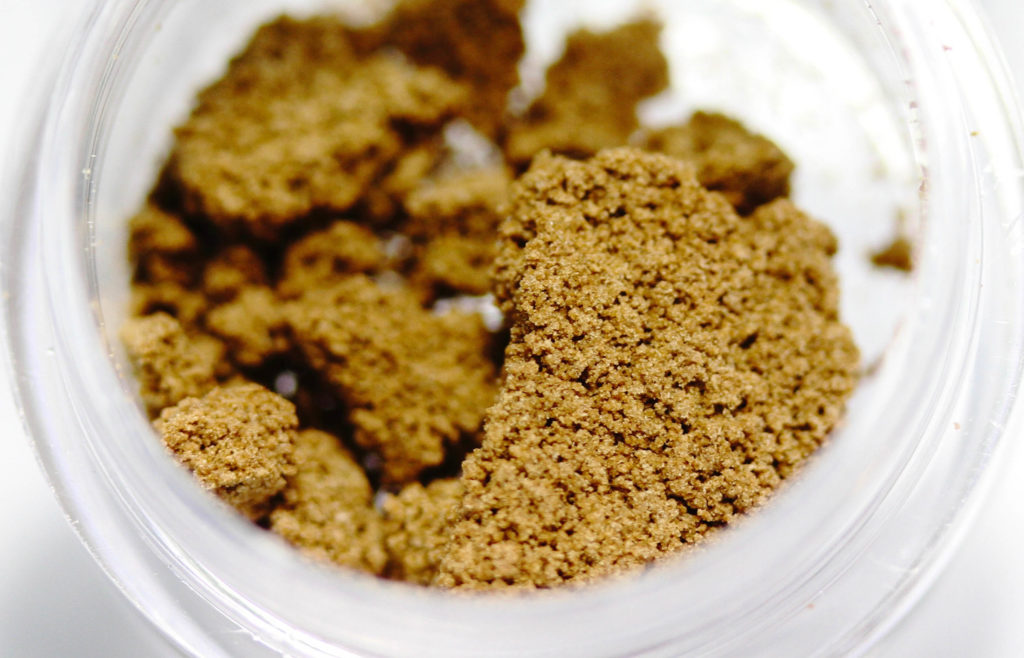
What you’ll need:
- Two buckets
- Cannabis buds, or trim
- Different sized “bubble bags.”
- Ice and water
- Baking paper
- Something to agitate the mixture, a wooden spoon or an electric paint mixer
- Food grade ethanol alcohol
- Strainer
Make ice-water hash in 5 steps:
- Start by freezing your material overnight. Like dry sifting, this will help release the resin head from the material more easily. Adding ice to the water will also help.
- Place your bags inside each other by size, with the smallest on the bottom and the largest on top. Wrap the bags over the bucket and secure them into place.
- Add your cannabis to the other bucket, add a generous amount of ice, and submerge the material completely in the water. Stir the mixture for about 10-15 minutes.
- Carefully pour the mixture into the other bucket with the bubble bags and let it sit for another 10-15 minutes. What is left is kief of varying quality, and as with dry sieving, the bottom bag will be the best quality and the top bag of lesser quality.
- Carefully take out each bag and remove the kief you have collected. You can add a little more ice and water to each bag, shake it a little, and let it drain before removing the bag. This will allow you to collect the remaining resin.
Repeat this process for as long as you collect resin, and like dry sieving, the first pass will yield the best quality. Always make sure your sieves are clean, and it’s recommended to clean each with water after every run. The bottom sieve is too fine and can easily become clogged. Therefore, soak it and clean it with alcohol first.
Once you have collected your kief, you need to dry it. Again, some like to mix different sizes, and others prefer to keep it separate. Take your resin and run it through a strainer. This will break it up into smaller pieces, which you should spread out evenly on a sheet of baking paper. The better you spread it out, the better the resin will dry. So it’s recommended to use multiple sheets of paper rather than stuffing them together.
For optimal resin and hash drying conditions, you need a room with a stable temperature of 12°C and humidity of 35%. Drying is crucial for making high-quality ice water hash, and stable and proper conditions are essential. Depending on your source material, kief will take 5-15 days to dry.
Once dried, you can use the same method as above to press your kief into hash.
Instead of using a bucket and mixing it manually, you can use a portable mini washing machine.
Simply place your material in the washer, fill it with ice, and then pour water in to completely saturate the material. As you repeat your washes, the ice will begin to melt, and you will eventually need to add more ice to keep the temperatures cold.
Alternatively, you can use a freeze dryer to dry your resin or hash. For “shelf-stable” conditions that ensure you can store it for years without it going mouldy, your final product should have a water activity level of 0.60%.
If you are starting with “fresh frozen” or dried material, let it soak for a few minutes before you start stirring it. This will allow the material to rehydrate, making the extraction of the resin a little easier.
When is the best time to harvest your plants for making hash?
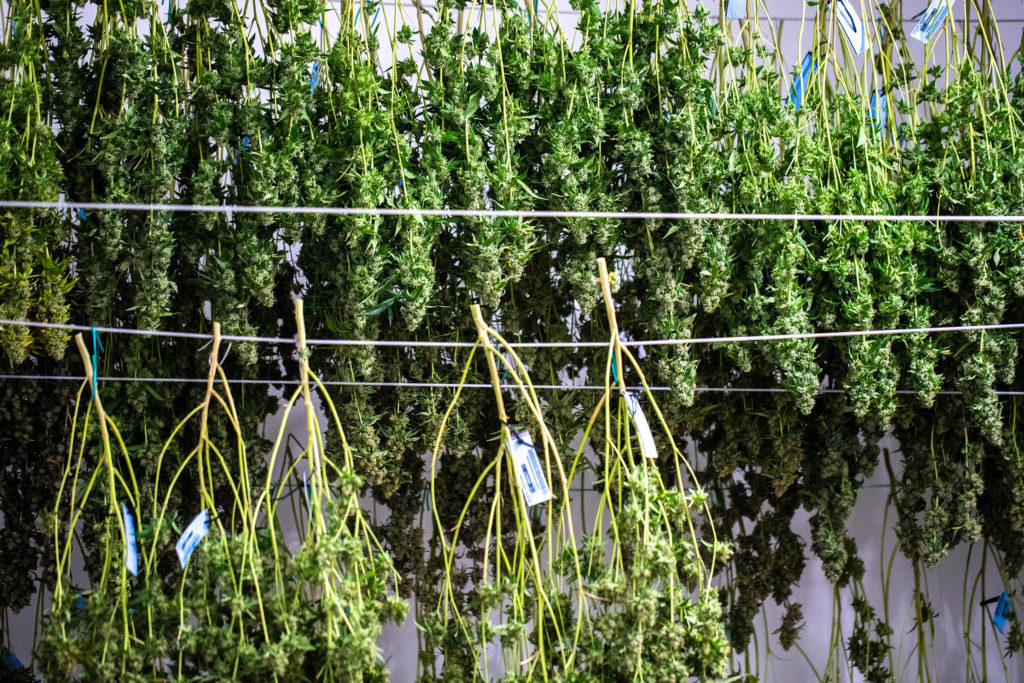
When harvesting cannabis plants for hash, you should generally let your plants mature 10 to 15 days longer than when harvesting for flowers. The extra time is necessary for the resin in the trichomes to fully develop.
If you look at your plant, it would mean that the stigmas have turned brown and are starting to fall off, and the bract is very plump. A better way, of course, would be to take a closer look at the trichomes themselves.
Taking a closer look at the trichomes
As the plants mature, the trichome glands change colour, going from transparent to cloudy white and amber. Contrary to popular belief, at least when it comes to making good hashish, the gland’s colour and size do not say much about the stage of maturity of the resin glands.
The colour of the glands depends on genetics and the light source. The change in trichome colour indicates the “maturation” of cannabinoids and their breakdown. This does not necessarily correspond to the maturity of the resin glands themselves.
Resin glands on cannabis plants are formed to protect themselves and trap pollen. They are not dependent on the flowering cycle itself. However, the closer you get to the peak of the flowering cycle, the more resin will form in the trichome glands.
The resin glands become attached to the stem in the same way that the old fruit or leaves become attached to the branch called abscission. The best indicator of the maturity of the resin glands is the size of the abscission. The more mature the gland becomes, the smaller the abscission. When the glands are fully mature, they fall off, just like old fruit or leaves.
Wait, what about shatter, wax, rosin, and the rest of the gang?
Well, no offence to our American friends, but to the rest of the world, hashish means something different. Think of “American football” to the rest of the world, where football means something different; the same goes for hashish.
That’s not to say that all these products are not great, stronger, and cleaner, but they are not the traditional form of making hashish. Many hashish traditions are thousands of years old, and some are so embedded in everyday society, which illustrates how influential, and important the original hashish culture was.
Cannabis culture and the cannabis industry are not new, and they are just becoming legal again.
- Disclaimer:Laws and regulations regarding cannabis use differ from country to country. Sensi Seeds therefore strongly advises you to check your local laws and regulations. Do not act in conflict with the law.







